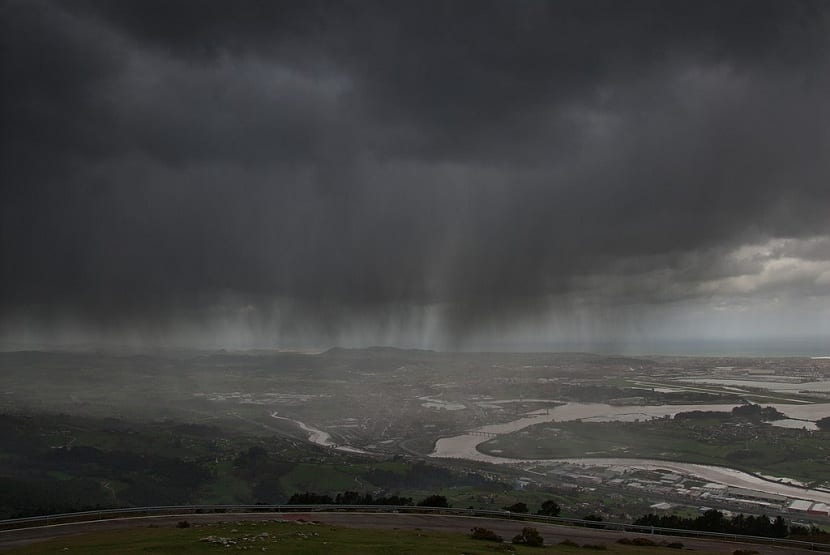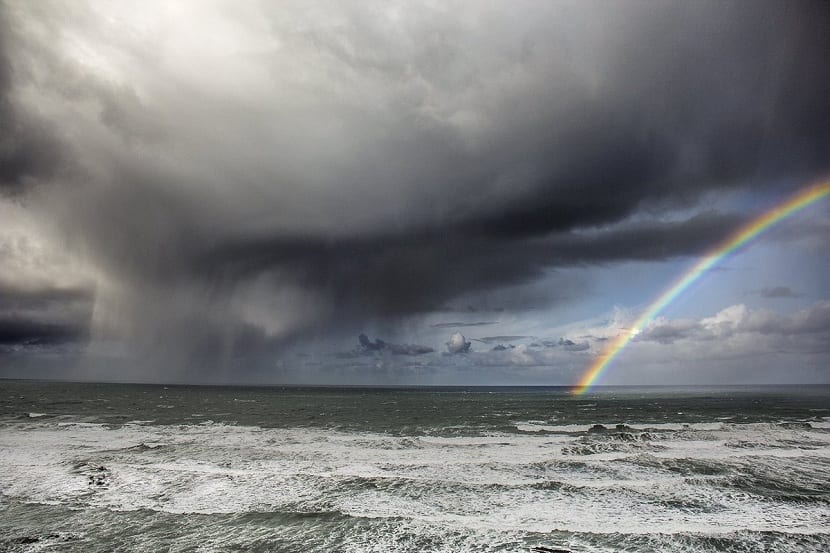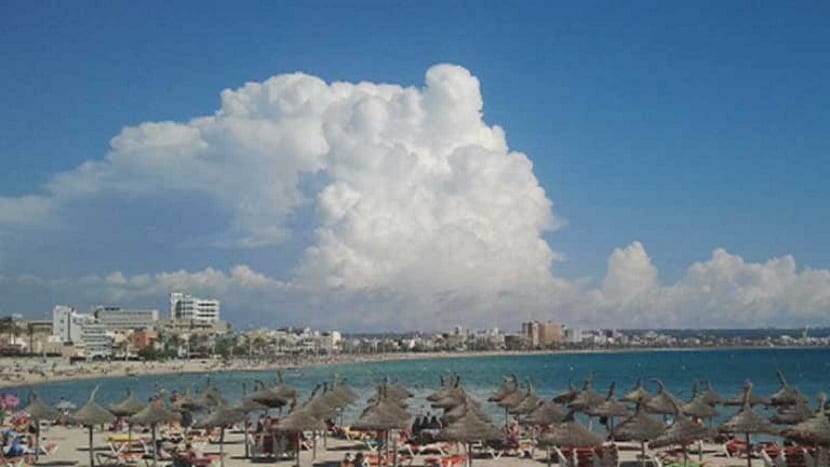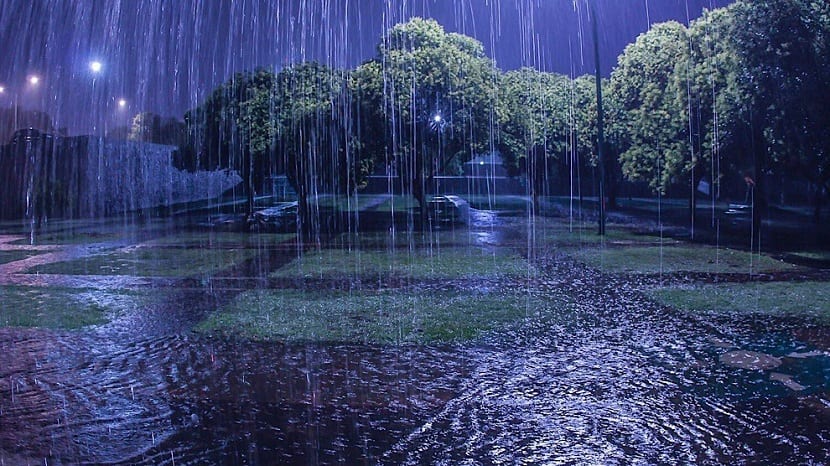
In popular meteorology we often come across somewhat confusing concepts that can lead us to make mistakes. One of these concepts is that of shower. We associate it with intense rains with particular characteristics. Confuse rain with storms, with downpours, etc. It is quite common in everyday speech.
That's what this article is for. Here we will solve the doubts about what is a shower and what are its main characteristics.
Etymology

It is a word that may seem strange used in a formal way. It seems more typical of informal language or a kind of idiom of the language. However, chubasco is an official Spanish word. It comes from the Portuguese «chuva» which means rain. Therefore, we can say that the shower is a rain whose characteristics are particular.
This term was born to be able to differentiate the size of the precipitations or the intensity with which the rain falls. It is something like what you might call a shower. It is usually used to describe rainy weather situations in which they fall intensely but for a short period of time. Normally, these rains are due to the formation of fronts or atmospheric instability. Usually has some issues related to humidity and high pressure in the environment
Differences with other types of rain

The main difference that it has with other types of extended rainfall is that the shower usually appears unexpectedly. It is more complex for meteorologists to predict when a shower is going to fall. The rain is totally unexpected And, most of the time, it drops an awful lot of liters per square meter, but it ends in a matter of minutes. This is what makes it difficult for radars to detect it.
You can more or less detect a pattern that can lead to showers, but is usually not right. For this reason, it is more common to announce in the weather report that there will be showers without actually having them. This type of precipitation is quite aggressive and involves a large amount of water in a short time. Because of this, the streets flood very quickly and can cause disasters for humans.
The first consequences are the destruction or flooding of garages and basements. If the runoff or the slope of the place where the shower falls is high, it is possible that it could drag a vehicle or even break down older walls. We must take into account that, even if it is a short precipitation in time, the intensity and volume of water that falls is too high. This is the factor that presents the most risk.
A precipitation can extend for hours that will not be dangerous as long as it does not fall intensely. Quite the opposite, the best precipitation is one that is long-lasting and with not much intensity, so that it can fill aquifers and soak the soil without harming crops or plants.
Squall components

We are going to analyze the characteristics and components of the shower. As we move to Ecuador, showers are becoming more frequent and common. This has to do, as we have mentioned before, because they are meteorological phenomena associated with stable and warm climates. In our peninsula we enjoy a pleasant climate with high temperatures and some instabilities that cause the appearance of these phenomena.
One of the ways to be able to predict that a shower is going to come is when we see the formation of very black clouds, it begins to make very strong winds and even hail may fall. It is in these cases where there will begin to be greater atmospheric instability that will lead to a shower. In this situation, it is better to be safe, because it also usually comes accompanied with electric storms.
After only a few minutes, the sky becomes clearer and the sun even rises. The temperature is usually more pleasant after the drop that it suffers with the arrival of the phenomenon. All these components make the shower quite easy to identify. Above all, if we know the regions where they usually occur, it is easier to forecast how long it will last and how often we can find it. In temperate climates, the frequency with which this phenomenon occurs is also increasing.
All of the above indicates that instability is increasing globally.
Increase in showers worldwide
Atmospheric instability is accompanied by high temperatures, a bit more humidity. The climate change that is taking place globally is increasing the average temperatures of the planet. Therefore, it could be said that it means the expansion of the tropics towards the interior of the poles. This can translate into a potential increase in areas where there may be showers with similar characteristics to those near the Equator.
This is the reason why, in Spain, the presence of these phenomena of short but intense rains is growing. As does temperature and humidity, so does the accompanying atmospheric instability. So, we can say that, as there are more "tropical" areas with a potential for increased atmospheric instability, will result in an increase in showers.
This is one of the effects that climate change brings. Not only will the frequency of these phenomena increase in areas that are considered temperate climates, but their intensity will also increase. Higher intensity can cause more damage and more danger. To this we add that showers are very difficult to predict, so the only thing we can do, is to modify the structure of urban planning so that it can be planned for the action of showers.
Another thing we can do is improve the prediction systems for these phenomena so that we can anticipate and that no one is "caught by surprise" these intense events.
I hope that with this information it is clear what a shower is and its characteristics.